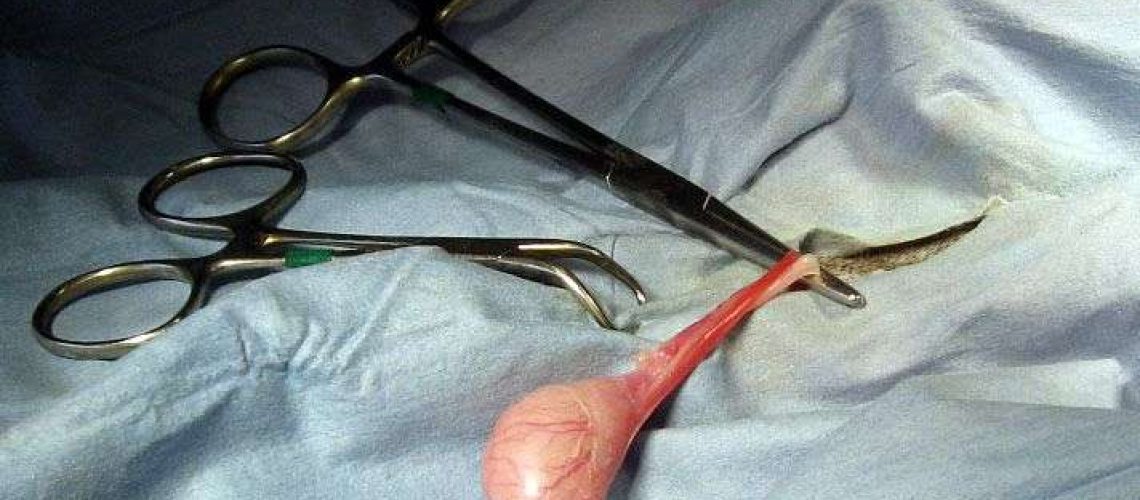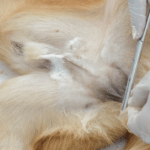Key Takeaways:
- Neutering a dog involves the surgical removal of the testicles in male dogs or ovaries and uterus in female dogs.
- Neutering is a routine procedure that can be performed by a veterinarian under general anesthesia.
- Benefits of neutering include prevention of unwanted pregnancies, reduction in aggressive behavior, and decreased risk of certain health issues like testicular cancer or uterine infections.
- The recovery period for neutered dogs typically lasts around 10-14 days, during which time they may require pain medication and limited physical activity.
- Neutering can help control the pet population and reduce the number of stray animals, contributing to overall community welfare.
Are you a dog lover who wants to ensure the well-being of your furry friend? Have you ever wondered about the benefits of neutering your dog? If so, you're in the right place! Understanding the surgical procedure to neuter a dog is not only essential for responsible pet ownership, but it also has numerous advantages for both you and your beloved companion. In fact, did you know that neutered dogs are three times less likely to develop certain types of cancer? By delving into this topic, we will uncover the valuable information that every dog owner should know. So, let's embark on this journey together and discover how neutering can positively impact your dog's health and happiness. Get ready to become an informed and caring pet parent!
What is Dog Neutering and Why is it Done?
Definition of Dog Neutering
Dog neutering, also known as castration, is a surgical procedure performed by a veterinarian to remove a male dog's testicles. This procedure makes the dog unable to reproduce and eliminates the production of certain hormones that can lead to unwanted behaviors.
Reasons for Dog Neutering
There are several reasons why dog owners choose to have their pets neutered. One primary reason is population control. By neutering male dogs, they cannot impregnate female dogs, which helps prevent overpopulation and reduces the number of stray or abandoned dogs.
Another reason for dog neutering is behavioral improvement. Neutered dogs tend to be less aggressive and have fewer territorial instincts. They are also less likely to roam away from home in search of a mate, reducing the risk of accidents or getting lost.
Furthermore, neutering can help improve the overall health of male dogs. It reduces the risk of certain diseases such as testicular cancer and prostate problems.
In summary, dog neutering is done to control population, improve behavior, and promote better health for male dogs.
Understanding the Surgical Procedure to Neuter a Dog
The Surgical Process
The surgical procedure to neuter a dog involves making a small incision near the scrotum area. The veterinarian removes both testicles through this incision. The incision is then closed with sutures or surgical glue.
During the surgery, the dog will be under general anesthesia, meaning they will be asleep and won't feel any pain or discomfort during the procedure.
Benefits of General Anesthesia
Using general anesthesia ensures that the dog remains still during surgery and prevents them from experiencing any pain. It also allows the veterinarian to perform the surgery more efficiently and reduces the risk of complications.
Duration of the Procedure
The actual surgical procedure to neuter a dog usually takes around 20 to 30 minutes. However, the overall time at the veterinary clinic may be longer due to pre-surgical preparations and post-operative recovery monitoring.
After the surgery, dogs are typically kept at the clinic for a few hours or overnight to ensure they wake up from anesthesia smoothly and show signs of stable recovery.
In conclusion, dog neutering is a relatively quick surgical procedure performed under general anesthesia, ensuring the comfort and safety of the dog during the operation.
Preparing for Your Dog's Neutering Surgery
Consulting with a Veterinarian
Before your dog's neutering surgery, it is important to consult with a veterinarian. They will provide you with specific instructions tailored to your dog's needs. The veterinarian will assess your dog's overall health and may recommend certain pre-surgery tests to ensure they are fit for the procedure. It is crucial to follow their guidance to ensure a smooth and successful surgery.
Preparing Your Home
To prepare for your dog's neutering surgery, make sure you create a comfortable space for their recovery at home. Set up a quiet area where they can rest without being disturbed. Place soft bedding and provide easy access to water and food. It is also essential to remove any hazards that could potentially harm them during their recovery period.
Tips:
- Consult with your veterinarian about any necessary pre-surgery tests.
- Follow the veterinarian's instructions carefully.
- Create a calm and comfortable space at home for your dog's recovery.
Potential Risks and Complications of Dog Neutering
Neutering is generally considered safe, but like any surgical procedure, there are potential risks and complications that you should be aware of. These risks include infection, bleeding, adverse reactions to anesthesia, or complications related to wound healing. While these risks are relatively low, it is important to discuss them with your veterinarian beforehand.
Signs of Infection or Complications
After the surgery, closely monitor your dog for any signs of infection or complications. These may include excessive swelling, redness around the incision site, discharge from the wound, or behavioral changes such as loss of appetite or lethargy. If you notice any concerning symptoms, contact your veterinarian immediately.
Tips:
- Discuss potential risks and complications with your veterinarian.
- Monitor your dog closely for any signs of infection or complications.
- Contact your veterinarian if you notice any concerning symptoms.
What to Expect After Your Dog has been Neutered
After your dog's neutering surgery, it is normal for them to experience some discomfort and grogginess. They may also have a decreased appetite and energy levels. It is crucial to provide them with a calm and quiet environment during their recovery period.
Post-Surgery Care
Your veterinarian will provide specific instructions on how to care for your dog after the surgery. This may include administering medication, keeping the incision site clean, and limiting their physical activity. Follow these instructions diligently to ensure proper healing and minimize any potential complications.
Tips:
- Expect your dog to be groggy and have a decreased appetite after surgery.
- Provide a calm and quiet environment for their recovery.
- Follow the post-surgery care instructions provided by your veterinarian.
Tips for Helping Your Dog Recover from Neutering at Home
While your dog recovers from neutering at home, there are several things you can do to aid their healing process.
Pain Management
Your veterinarian may prescribe pain medication for your dog's post-operative pain management. Administer the medication as instructed by the vet to keep your furry friend comfortable during their recovery.
Rest and Restricted Activity
It is essential to restrict your dog's physical activity during their recovery period. Avoid activities such as running, jumping, or playing rough. Encourage restful behavior by providing a cozy space where they can relax without being disturbed.
Tips:
- Administer prescribed pain medication as instructed by the vet.
- Restrict physical activity to aid the healing process.
- Provide a comfortable and quiet space for your dog to rest.
Important Things to Consider Before Choosing Dog Neutering
Before deciding on dog neutering, there are several important factors to consider.
Health Benefits and Risks
Neutering can have various health benefits for dogs, such as reducing the risk of certain cancers and behavioral issues. However, it is crucial to weigh these benefits against potential risks and consult with your veterinarian to make an informed decision based on your dog's specific circumstances.
Long-Term Commitment
Neutering is a permanent decision that will affect your dog's reproductive capabilities. Consider whether you are prepared for this long-term commitment before proceeding with the surgery.
Tips:
- Discuss the health benefits and risks of neutering with your veterinarian.
- Consider the long-term commitment involved in neutering.
- Make an informed decision based on your dog's individual needs and circumstances.
In conclusion, neutering a dog is a common surgical procedure that helps prevent certain health issues and unwanted behaviors. It is important for dog owners to consult with a veterinarian to make an informed decision about whether or not to have their pet neutered.
How long does it take a dog to recover from neuter surgery?
What is the typical recovery time for a dog after being spayed or neutered? Most dogs recover relatively quickly, with males typically taking around five to seven days and females potentially needing seven to ten days due to the more invasive nature of the procedure. After this time, they will be back to their normal selves and feeling much better.
What are the different procedures to neuter a dog?
There are two methods of performing surgical castration - scrotal and pre-scrotal. In the past, veterinarians were primarily trained in pre-scrotal castration, but a recent study suggests that scrotal castration may be linked to a lower risk of post-operative trauma and complications.
Do they remove the balls when neutering a dog?
When a male dog is castrated, the testicles are surgically removed while leaving the scrotum intact. This may result in the appearance of still having testicles after the procedure. However, over time, the scrotum will decrease in size and become less visible.
What do they cut off when they neuter a dog?
When it comes to dogs, a single incision is made in front of the scrotum to remove both testicles. On the other hand, cats have two separate incisions made over each testicle in the scrotum, resulting in a different appearance for the incision areas in cats compared to dogs.
How long should a dog be on bed rest after neutering?
Restrict your pet's activity. After surgery, most pets will naturally rest due to the sedative effects of anesthesia, but some may quickly return to normal activity. Regardless of your pet's energy levels, it is important to restrict their movements during the first two weeks following surgery.
How long does a dog need to wear a cone after being neutered?
To prevent your pet from licking their incision after surgery, it is crucial to have them wear a plastic cone called an E-Collar for 7-10 days. If they were to lick the incision, it could cause further harm and potentially remove stitches. Additionally, it is important to restrict their physical activity such as running, jumping, or playing for 7-10 days.

















